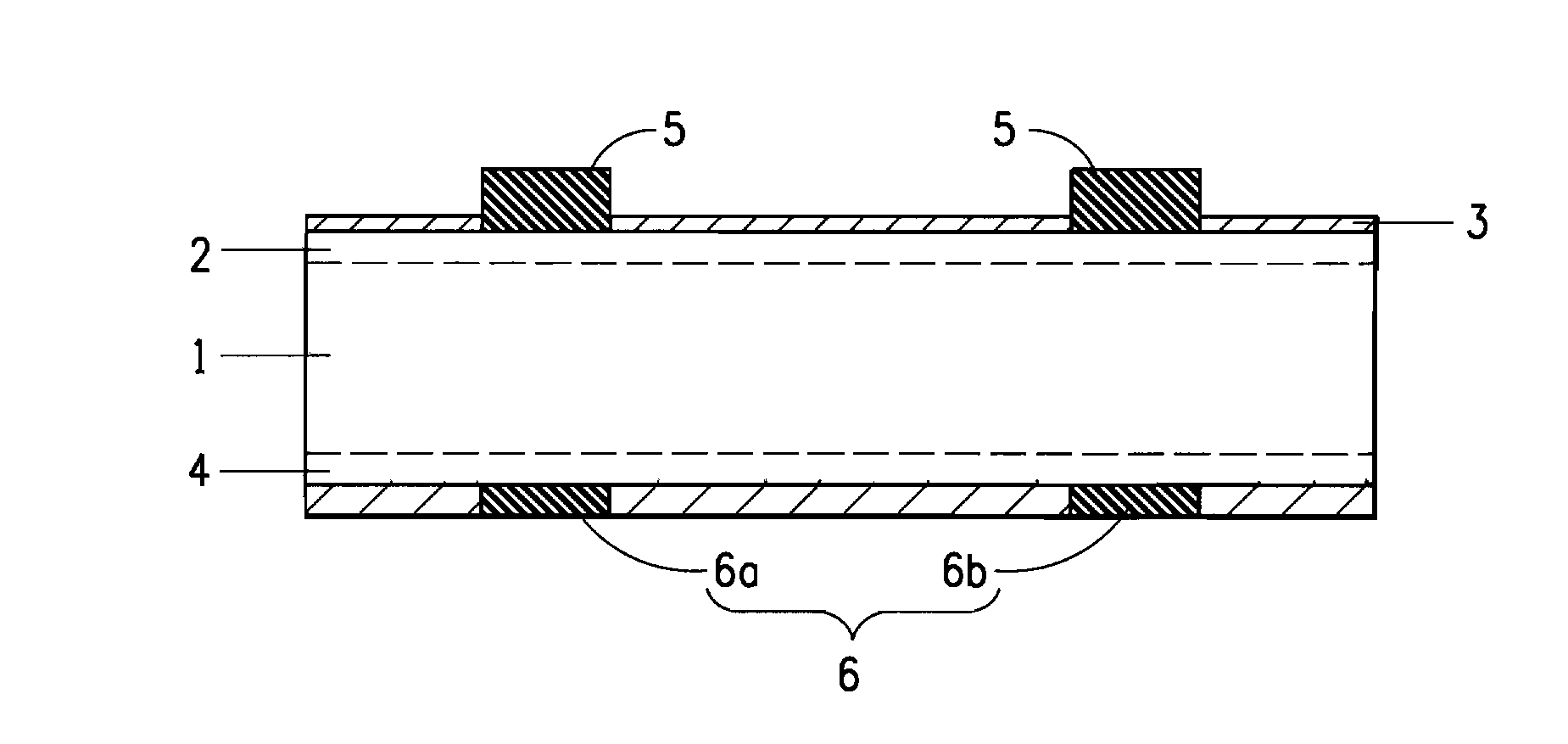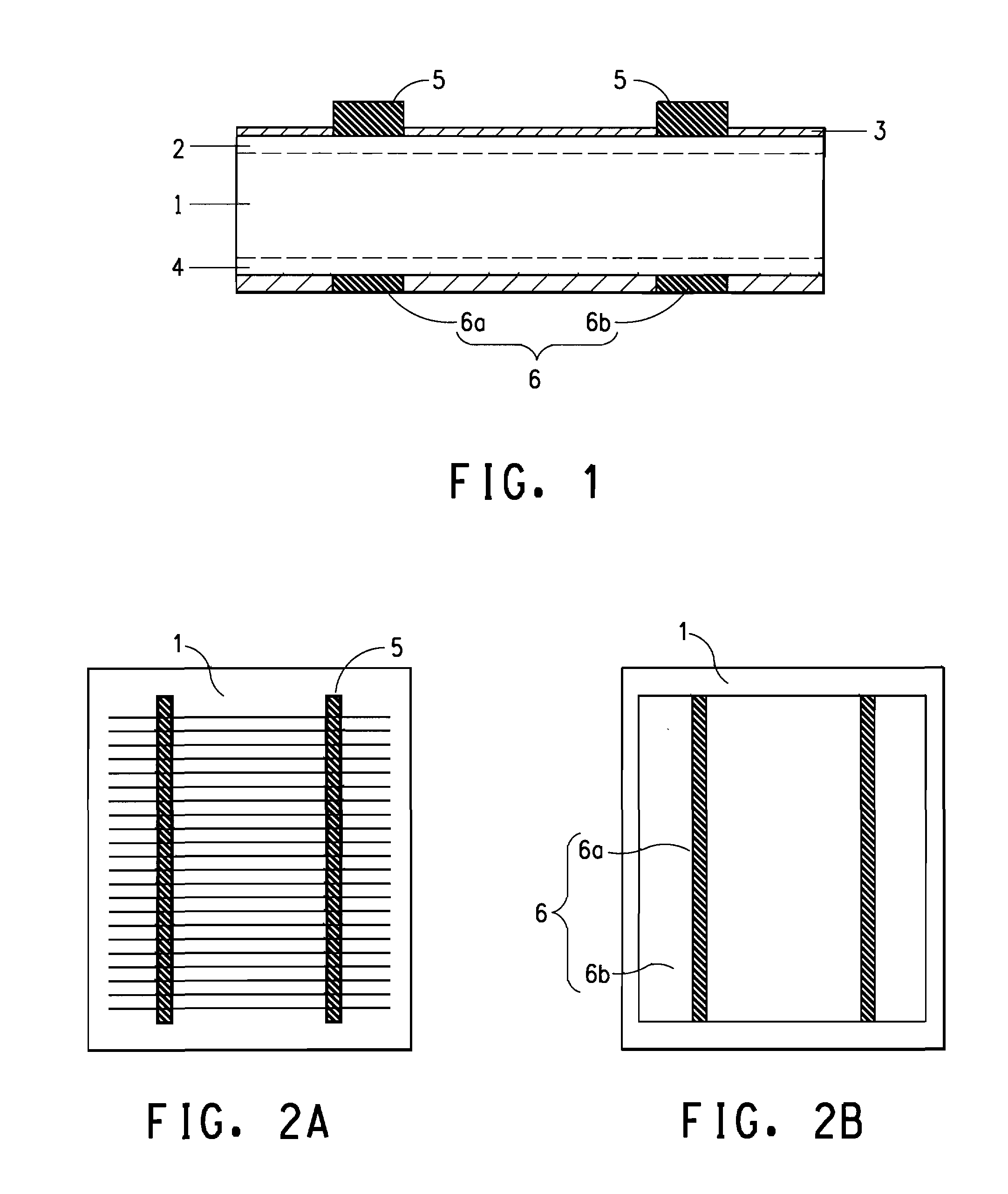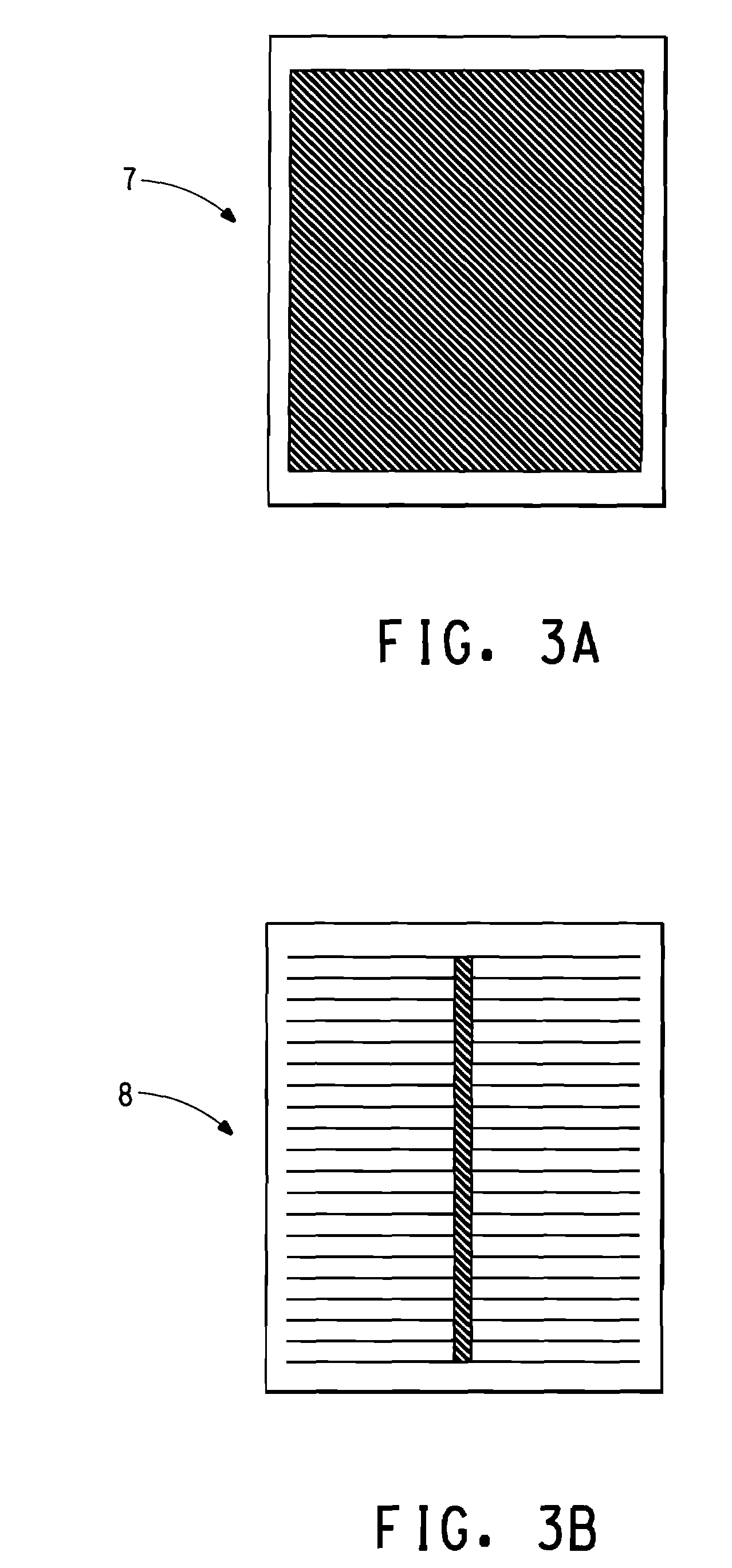Conductive paste and grid electrode for silicon solar cells
a solar cell and grid electrode technology, applied in the direction of final product manufacturing, conductors, metal/alloy conductors, etc., can solve the problems of adversely affecting the conversion efficiency of solar cells and reducing yields, and achieve the effect of low palladium content, small invention, and high efficiency of obtained solar cells
- Summary
- Abstract
- Description
- Claims
- Application Information
AI Technical Summary
Benefits of technology
Problems solved by technology
Method used
Image
Examples
examples
[0067]1) 10 parts ethyl cellulose resin was added to 90 parts terpineol, the mixture was stirred and dissolved for about 2 hours while heated to 80° C., and the solution was then allowed to stand until returned to room temperature, giving a binder solution.
[0068]2) 50 parts Pd powder was mixed into 50 parts of the ethyl cellulose resin solution of 1), and the mixture was kneaded with 3 rolls, giving a Pd paste.
[0069]3-1) 3 parts of the Pd paste of 2) was added to 100 parts solar cell paste PV145 (Ag paste) by DuPont, and the mixture was stirred to homogeneity in a defoaming stirrer, giving a paste A.
[0070]3-2) 50 parts PV145 was added to 50 parts of paste A, and the mixture was stirred to homogeneity in a defoaming stirrer, giving paste B.
[0071]3-3) 50 parts of PV145 was added to 50 parts of the paste B, and the mixture was stirred to homogeneity in a defoaming stirrer, giving paste C.
[0072]3-4) 50 parts of PV145 was added to 50 parts of the paste C, and the mixture was stirred to h...
PUM
| Property | Measurement | Unit |
|---|---|---|
| width | aaaaa | aaaaa |
| temperatures | aaaaa | aaaaa |
| particle diameter | aaaaa | aaaaa |
Abstract
Description
Claims
Application Information
 Login to View More
Login to View More - R&D
- Intellectual Property
- Life Sciences
- Materials
- Tech Scout
- Unparalleled Data Quality
- Higher Quality Content
- 60% Fewer Hallucinations
Browse by: Latest US Patents, China's latest patents, Technical Efficacy Thesaurus, Application Domain, Technology Topic, Popular Technical Reports.
© 2025 PatSnap. All rights reserved.Legal|Privacy policy|Modern Slavery Act Transparency Statement|Sitemap|About US| Contact US: help@patsnap.com



